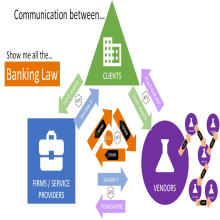Articles
How Artificial Intelligence Is Transforming the M&A Practice
 Safak Herdem from Herdem Law on
Safak Herdem from Herdem Law on
Artificial intelligence is having a major impact on merger and acquisitions practice. AI is being used to automate tasks, identify potential targets, evaluate targets, negotiate deals, and manage risk. This is leading to faster, more efficient, and more successful M&A transactions.
AI - Implications for Employment and the Future of Work
 Filipe Consciência from Caria Mendes Advogados on
Filipe Consciência from Caria Mendes Advogados on
The rapid advancement of robotics and AI technologies has sparked discussions about the future of work. As robots with artificial intelligence become more capable of performing complex tasks, there is a growing concern that human workers may face job displacement.
Could robots with AI start to perform a significant portion of the work currently done by humans and have real implications in the labor market?
Artificial Intelligence and Business Crisis Prevention: What Changes with the New Code
 Marco Catalano from Studio Irrera on
Marco Catalano from Studio Irrera on
The SALI Alliance Releases Second Major Version of the Legal Matter Specification Standard
 Pragma International from Studio Rossi-Gerosa Commercialisti Associati on
Pragma International from Studio Rossi-Gerosa Commercialisti Associati on
This new version represents an important milestone for the industry just over two years after the issuance of the well-received LMSS 1.0. The taxonomy has expanded to almost 10,000 categories that the legal market uses to describe its services in detail, and in a way that is comparable across organizations.
The SALI Alliance Releases Second Major Version of the Legal Matter Specification Standard
 Pragma International from Studio Rosso on
Pragma International from Studio Rosso on
This new version represents an important milestone for the industry just over two years after the issuance of the well-received LMSS 1.0. The taxonomy has expanded to almost 10,000 categories that the legal market uses to describe its services in detail, and in a way that is comparable across organizations.



